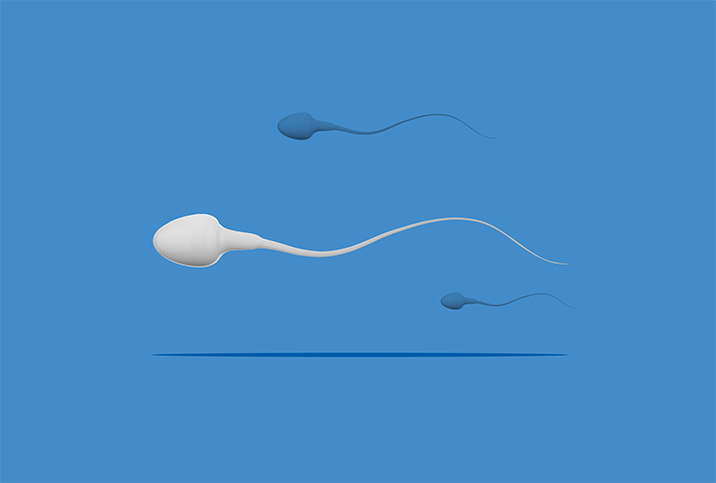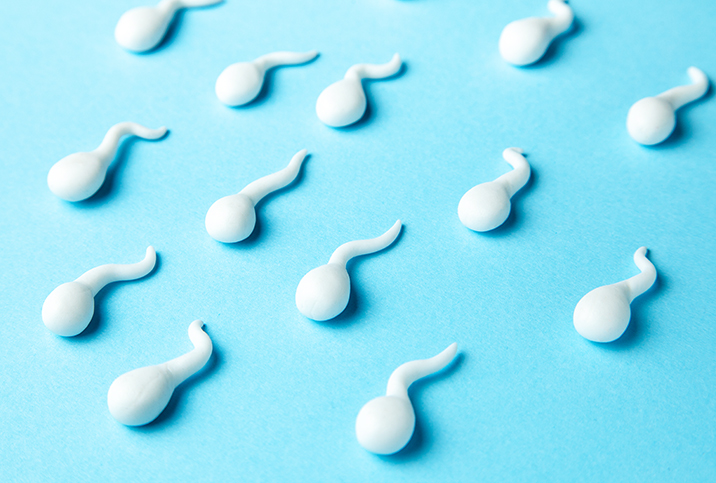Let's Talk Low Sperm Count—and Its Risk Factors

Our bodies are complex, interconnected systems that are remarkably efficient but do occasionally malfunction. As with anything else, we require regular maintenance and checkups.
Think of it this way: If your car fails to start, a mechanic can diagnose the problem. Similarly, when couples are struggling to get pregnant, doctors can run a series of tests to help diagnose the issue. Testing involves examining the fertility of both partners, including an analysis of a woman's eggs and a man's semen to see if his corresponding sperm count is low.
Egg counts are fairly straightforward from a numerical standpoint. Women have about 1 million eggs at birth and about 300,000 remaining by puberty. A woman ovulates roughly 300 to 400 of those 300,000 in her lifetime, and those are the ones that could potentially be fertilized and develop into a child.
The numbers for women are much smaller and easier to comprehend when compared to the 15 million to more than 200 million sperm cells that could be present in one milliliter of semen.
What sperm count means
"When someone gets a semen analysis, the standard things we're looking at are ejaculatory volume, sperm concentration—so, hopefully, millions of sperm per milliliter—and the percentage of sperm that are demonstrating motility. And we try to quantify that motility, describe it, categorize it one way or the other," said Karen Baker, M.D., a urologist and an associate professor of surgery at Duke University in Durham, North Carolina. "They'll sometimes also include a total modal count, which is a calculated value of volume times concentration times percent motility."
Baker admitted that when someone uses the term "sperm count," it can be unclear. The term isn't exactly precise, and depending on whom you're speaking to could refer to any of these categories. She did say the most current uses of the term generally refer to concentration and total modal count.
This could also explain why the "average" number for sperm count—again, from 15 million to more than 200 million—ranges so greatly. Several other factors could impact someone's sperm count.
"Some factors that influence the numbers of sperm include the time since the last ejaculation and even the age of the man," said Kathleen Hwang, M.D., a urologist at University of Pittsburgh Medical Center (UPMC). "The normal reference range for sperm counts on a semen analysis is determined by the World Health Organization."
Keep in mind, however, that having an amount of sperm within that range isn't the only consideration.
"While having parameters that fall within range is something that we consider a good thing, just by having higher sperm numbers does not guarantee sperm health," Hwang added. "There are many other factors, including how many of those sperm are good swimmers and what they look like."
Keeping your swimmers healthy
"When we go to the doctor to get [a fertility] test, we kind of assume that we're going to fall into one of two buckets: the normal bucket or the abnormal bucket," Baker said. "And [people assume] that there's a really wide space between those two buckets, so the chances we would end up in the wrong bucket would be really low. Unfortunately, semen parameters don't do a great job of predicting which couples are going to get pregnant, frustratingly."
Sperm count does not equal sperm quality, so there are certainly situations where the problem might have less to do with the amount of sperm a man is producing and more to do with the health of the sperm.
However, there are also many factors that could be affecting both sperm health and sperm count that men should avoid if they plan to have children.
As Baker put it, there is no "smoking gun" to blame for all sperm-related problems, but she identified two specific culprits that affect men's reproductive capability: exogenous testosterone and anabolic steroids.
While some anabolic steroids are used by healthcare professionals to treat hormonal issues, muscle loss or delayed puberty in men, they are also frequently abused by men looking for a quick way to build muscle. Doses used by bodybuilders and athletes are often 10 to 100 times stronger than those prescribed by health professionals.
Additionally, a study from 2019 went as far as to call exogenous testosterone a contraceptive because of its role in substantially decreasing a man's sperm count. Exogenous testosterone comes from a source outside the body.
"Taking testosterone—really, taking anything marketed towards male vanity, like putting hair on your head or making you magically a sexual beast or putting muscle on without effort—unfortunately, a certain percentage of those supplements are tainted with anabolic steroids," Baker said. "That's probably the big warning sign, if you're taking something you think is supposed to make you a 'manly man' and your sperm count comes back much lower than expected."
Other sperm count risk factors
Baker identified another substance that could drastically lower sperm count, one on the rise and targeted toward a much broader demographic than bodybuilders and athletes: cannabis.
First, cannabis is directly toxic to sperm. She expanded on that by detailing how our bodies process endocannabinoids, which, it turns out, is extremely quickly. The natural endocannabinoids in our brains last only a nanosecond. They're there and then they're gone, she said.
However, the extra endocannabinoids we ingest from marijuana stick around much longer. By lingering, these endocannabinoids interfere with our hormones; they suppress the portion of the brain that transports signals to the testicles and impede or altogether halt the production of sperm in the testicles.
Additionally, high heat, such as that from a hot laptop on your thighs or from sitting too long in a hot tub, is damaging to sperm, Baker said. Men might see a temporary drop in sperm count if they're seriously ill, as the body prioritizes fighting the illness rather than producing sperm.
Of course, cancer—testicular cancer foremost—can cause a significant decrease in sperm production.
"Hopefully, folks know that they need to check their testicles once a month to be sure they're not feeling any lumps or bumps," Baker said. "We'd love for more guys to, you know, check the beans, right? Check your boys."


















